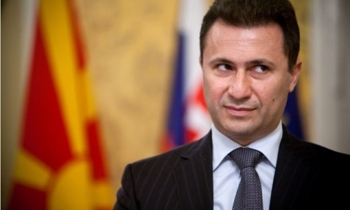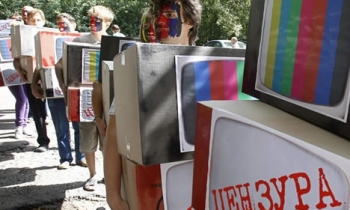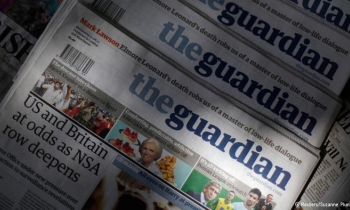Investigative reporters toil in hidden corners, digging through court records, meeting anonymous whistle blowers in nondescript cafes. It is not uncommon for them to spend a year on a report that makes the front page for only a day or two. They can effect profound policy change, but their jobs usually don’t bring much personal glory.
Now some investigative teams will get their “All the President’s Men” moment in the spotlight with “AIR: America’s Investigative Reports,” a weekly half-hour program on PBS, beginning tomorrow. Produced by WNET, the New York public television station, in association with the Center for Investigative Reporting in Berkeley, Calif., “AIR” will review one or two recent journalistic projects each week, most taken from regional newspapers. The episodes will summarize the reporting on the articles as well as how the reporters got their scoops.
Stephen Segaller, WNET’s director of news and public affairs programming and the executive in charge of “AIR,” said, “In addition to telling some great stories and showing the consequences to the American public, we also want to convey that investigative journalism specifically and journalism in general can contribute to the sanity and good order of the republic.”
By featuring reporting successes and shining light on how reporters go about their work, the series could give the profession a badly needed image boost, some analysts say.
“If it has the effect of revealing the kinds of things that journalists do that are invisible, that is potentially very interesting and quite good,” said Tom Rosenstiel, director of the Project for Excellence in Journalism. “If all that people see of journalism on television is reporters barking questions in press conferences or talk-show hosts on TV creating fictional characters of themselves, then there’s a lot of journalism in America that people aren’t seeing.”
“The public’s attitudes toward the press are not quite as dour as they were three or four years ago, but that’s not to say things are looking up, necessarily,” he added. “By many indices people think the press is less moral, less accurate, more prone to cover up mistakes and less interested in the good of America than they did 20 years ago.”
The first episode of “AIR” looks at The South Florida Sun-Sentinel’s 15-month unmasking of abuses in the Federal Emergency Management Agency’s distribution of relief money after Hurricane Frances in 2004. The Sun-Sentinel series led FEMA to change the way it processes claims. A Bloomberg Markets magazine investigation into clinical drug trials is scheduled to be profiled in coming weeks; an National Public Radio report is also in the lineup, and Internet reporting may be included, said Tom Casciato, the series’ executive producer.
In New York “AIR” will be shown on Fridays at 9 p.m. More than 180 stations, reaching about three-fourths of the country, have also agreed to carry the program. If the initial 12-week run, produced for $2 million, is a success, the producers say they hope to bring the series back.
The programs will give credit where it is due. One of the dirty little secrets of television news is that newspaper reporters can spend months digging up a scandal, only to see the story vault into the national consciousness when a TV newsmagazine swoops in and copies the final report, often with little or no credit to the original reporters.
“Newsmagazines are good at going out and stealing the story,” said Dan Noyes, acting executive director of the Center for Investigative Reporting, a nonprofit organization that produces reports for other news organizations, including PBS’s “Frontline.”
Mr. Rosenstiel said in an interview that he had not yet seen the program. But he said: “The great challenge for public television specifically and television generally is finding the resources to do investigative work. Even ‘60 Minutes’ and programs like that have made a practice for years of scouring local newspapers for ideas and then essentially reproducing what began as investigative reports by local news organizations. This is a way of addressing that more transparently and giving them credit.”
“AIR: America’s Investigative Reports” is the second recent effort by television to peek behind headlines and bylines. Bravo’s “Tabloid Wars,” its sensationalist title notwithstanding, last week finished a straightforward chronicling of the inner workings of The Daily News in New York.
“AIR” lacks the jumpy editing of “Tabloid Wars,” and it does not trail gossip columnists working the party circuit, but like “Tabloid Wars” it shows beat reporters pounding on doors and making endless phone calls.
The Sun-Sentinel reporters profiled in the first episode got their story by analyzing computer databases and canvassing housing complexes, hardly the Deep Throat-like drama the public has been conditioned to expect since “All the President’s Men.” But later episodes will profile articles based on anonymous sources, at least to the extent that it is possible.
One looks at a Seattle Post-Intelligencer report that relied on a publicly named whistle blower. The man won’t go on camera for “AIR,” because “the company he worked for is now paying him to be quiet,” said Mr. Noyes of the Center for Investigative Reporting. “We’re going to end up talking about that.”
The producers attended Investigative Reporters and Editors conferences in a search for profile subjects, including several that won awards from the organization, which has more than 4,000 members and is based at the Missouri School of Journalism. Brant Houston, its executive director, said the press had not been good at showing the public the process it goes through to report a story or at publicizing its work, other than reporting who won the Pulitzers and other prizes.
“Sometimes it’s competitive, but more than anything it’s been a culture that you shouldn’t boast,” Mr. Houston said in an interview. “We think that investigative journalism is critical to society functioning well and a program like this that highlights the best work done and shows its value to society is terrific.”









